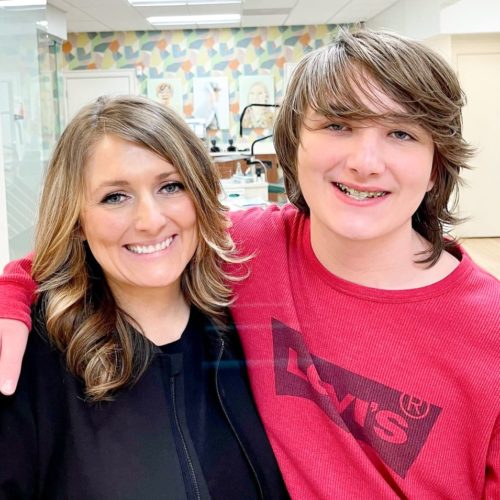If you’re already a braces patient here at Saddle Creek Orthodontics, chances are you’re pretty familiar with your appliance and your treatment plan. We want all our patients to be active participants in their own treatment plan, and a big part of that is understanding what to expect from the orthodontic process. Before you had your braces put on, we probably went over the ins and outs of this particular treatment method, including:
- how often your braces will need to be adjusted
- what foods you should avoid
- how to take care of your teeth and braces during treatment
- what results you can expect from your orthodontic treatment
- the estimated amount of time you’ll be in braces
But what about the actual mechanics that are involved in moving your teeth into the proper positions? Knowing more about how braces are designed to align your teeth and jaw can give you a deeper understanding of what’s happening behind the scenes as we create a healthier, straighter smile for you.
Let’s take a closer look at what your braces are made of, how they achieve movement, and what you can do to keep your teeth looking spectacular once we remove them!
What are braces made up of?
When learning more about how braces move your teeth, the first step is to familiarize yourself with their components. Braces require quite a few moving parts to achieve successful movement, but these are some of the most important ones.
Brackets
Brackets are the most visible part of your braces, and are generally made of metal or ceramic materials. We bond them to the surface of each tooth to keep them in place throughout your treatment.
Arch wires
These thin, rod-like metal wires are placed over each bracket, and are essential for creating the pressure against your teeth that will gradually move them their optimal positions.
O-Rings
These small elastic bands are also referred to as ligatures or ligature elastics. They are responsible for holding the bracket on the arch wire. O-rings are normally changed at each adjustment appointment. Our wide variety of colors means you can add a splash of fun to your smile any time! For patients who prefer a more natural look, we also carry clear or tooth-colored elastics.
These main components work together to exert constant pressure on the teeth. It’s this pressure that will gradually move them into their proper positions over the course of the treatment process. We will often use springs or rubber bands as well, in order to exert a bit more force in a specific direction.
Now that you know what braces are made of, let’s discuss how they move your teeth!
Moving the teeth through bone remodeling
To better understand the way braces work, it helps to have some knowledge of how the actual teeth are constructed. Your teeth are surrounded by gum tissue called gingiva at the top, and the bottom portion of the tooth is encased in a periodontal membrane. This may also be referred to as the periodontal ligament, or the PDL. The alveolar bone lies next to both of these.
After you have braces placed, they will begin to put pressure on your teeth. The periodontal membrane is stretched on one side and compressed on the other, which loosens the tooth slightly. New bone then grows in to support the tooth. This is called bone remodeling, and it’s where the magic happens!
If you want to get really technical, bone remodeling is a biomechanical process. That means the bones become stronger in response to the sustained load-bearing activity of braces. Once the load has been removed, the bones will go back to pre-treatment levels of weakness and inactivity. This is thanks to the collection of cells called osteoclasts and osteoblasts that make up our bones.
Each tooth is socketed in bone. For the upper teeth, it’s the maxilla, and for the lower, it’s the mandible. The PDL acts as a messenger between the teeth and surrounding bony sockets. Pressure between the PDL and bone creates osteoclasts, then breaks down the bone to restore the normal spacing between teeth and bone. There is a corresponding tension on the PDL behind the movement, causing the bone to create osteoblasts, effectively building new bone to fill in the difference. This will once again restore the normal spacing between teeth and bone.
This doesn’t require a large amount of force, just an amount of force that isn’t normally present, such as braces. Because your orthodontic treatment plan involves repeatedly tightening and adjusting your braces, this process is repeated many times, ultimately increasing the bone density of your teeth.
While the osteoclast (breakdown) process can take several days to get going, the osteoblast (rebuild) process can take up to three months, or sometimes even more time. The end result itself can actually take up to a year to stabilize! That’s one reason why it’s so important to wear a retainer regularly after your initial treatment has ended. Wearing your retainer as directed by Dr. Fagala will keep your teeth from shifting back to their original positions, so your brand new smile stays in place.
The force behind the movement
Your brackets and archwires deserve all the credit for providing your teeth with the necessary force and pressure needed for positive tooth movement. Archwires are typically made of materials that are activated by body heat to increase the level of stiffness, even as they struggle to retain their normal shape.
The wire we use initially is called a twist wire, and it’s like a small cable that wants to stay straight. When it’s placed on your teeth, the wire is activated by the heat of your mouth. Once you get a bit further into the treatment process, the twist wire will be replaced with one that’s more flexible, usually made of a nickel-titanium alloy. This wire is also activated by your body heat, causing it to become stiff. Once we place the brackets on your teeth and tie them to the wires, it completes the transmission of forces.
Archwires want to stay straight! It’s that desire that kicks off the force needed to begin that biomechanical process of bone remodeling, and what keeps it going throughout treatment. All that remodeling will eventually result in the straighter, healthier smile you’ve been working towards.
Your best smile is waiting for you at SCO
Whether you’re a new orthodontic patient, about to have your braces taken off, or anywhere in between, the Saddle Creek Orthodontics team is here to help support you in your journey! Dr. Fagala and the rest of our crew are always happy to discuss any questions or concerns you may have about your treatment plan or the orthodontic process. Even if all you need is a little bit of encouragement, you know where to find us!
We’re passionate about providing you with the best orthodontic experience possible, and committed to helping you achieve your very best smile with braces. Give us a call to learn more, or to schedule your complimentary consultation!
Best,






